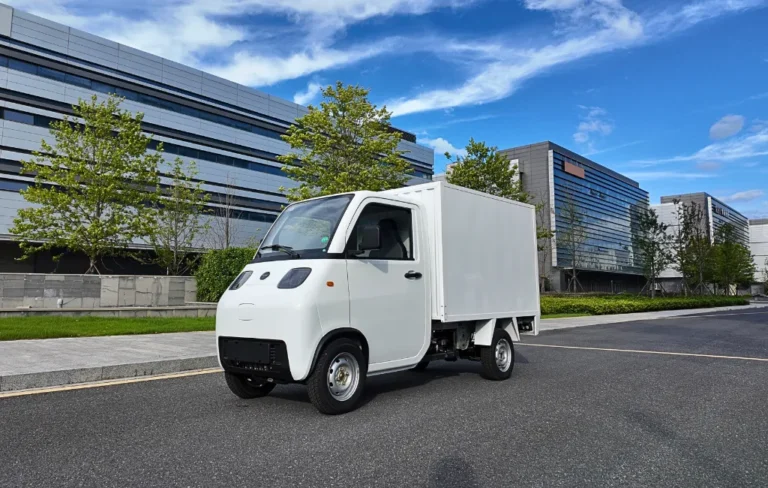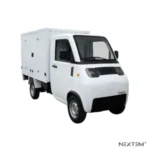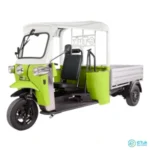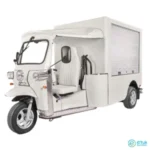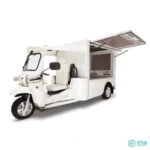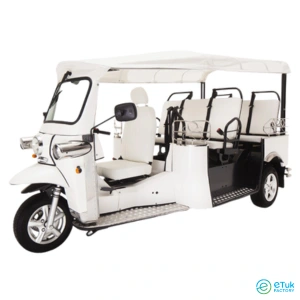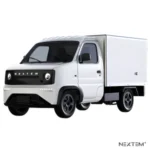Discover the advantages that the L5 Cargo tuk tuk can bring to logistics companies

In an increasingly demanding and competitive urban environment, logistics companies face the challenge of maintaining efficient, sustainable and economically viable operations.
The growing pressure for environmentally friendly solutions, coupled with the need for faster deliveries and reduced costs, has driven demand for innovative alternatives in the transport sector.
In this context, the L5 Cargo emerges, a 100% electric tuk-tuk that stands out as a versatile, efficient, and environmentally friendly solution.
This article explores the main advantages of the L5 Cargo for logistics companies, highlighting its potential to transform urban micro-mobility and optimize last-mile operations.
100% Electric
One of the main advantages of the L5 Cargo tuk tuk is that it is 100% electric, which means no polluting emissions and a significant contribution to reducing noise pollution in urban centers.
By opting for an electric tuk tuk, you’re not only reducing your fleet’s ecological footprint but also reinforcing your company’s sustainable image and contributing to the fulfillment of its environmental objectives.
In view of the growing urgency to combat environmental degradation, many cities have been restricting access of polluting vehicles to certain areas. In Portugal, Lisbon is currently the only city with Reduced Emission Zones (ZER) in place.
However, the global trend points to the expansion of these areas, as concerns about air quality and urban noise increase. With a 100 per cent electric vehicle like the L5 Cargo, you’ll be able to circulate freely in the ZERs, guaranteeing efficient operations even in areas with restricted access.
Reduction of Operational Costs
Reducing operating costs is another major advantage of using L5 Cargo in urban logistics.
The instability of fuel prices, which reached historic highs in 2022, has exerted strong pressure on the costs of transport and logistics companies’ fleets. Despite a recent downward trend and some stability, prices are still above the levels recorded before the pandemic.
With the current geopolitical instability contributing to greater volatility in the energy market, it’s essential that companies find more sustainable and economical alternatives.
One such alternative is electric vehicles. The significantly lower cost of charging compared to fueling with fossil fuels makes them an increasingly attractive solution for those looking for efficiency and savings.
By opting for the 100% electric L5 Cargo, your company will be able to significantly reduce its energy costs, contributing to lower fleet operating costs and more sustainable mobility.
More efficient deliveries
Getting around urban centers, especially in historic areas, can be a real challenge. Narrow, steep streets with limited access require agile and efficient mobility solutions, especially when it comes to making deliveries.
The L5 Cargo tuk tuk offers an intelligent response to this challenge, combining load capacity with urban versatility. With a box that can carry up to 800 kg, this vehicle stands out for its easy maneuverability in tight streets and ease of parking, even in hard-to-reach areas.
In this way, the L5 Cargo overcomes both cargo bikes, which, although agile, have limitations when it comes to transporting larger volumes and on longer journeys, and traditional vans, which offer greater capacity but face circulation and parking difficulties in historic centers.
What’s more, their agility in traffic allows for the creation of faster and more direct routes, contributing to more efficient fleet management and faster deliveries.
Flexibility and Agility
Thanks to its flexibility and the possibility of customisation – an advantage we’ll explore later – the L5 Cargo tuk tuk adapts to different areas of logistics, especially in the last mile segment
As well as delivering parcels, this tuk tuk can be used to distribute mail, deliver food, or other products such as medicines.
Its versatility also makes it an excellent solution for supporting urban micro hubs – small warehouses strategically located in urban areas, which bring products closer to the end consumer. This model makes it possible to optimize deliveries in congested areas, reduce waiting times, and contribute to the decentralization of urban logistics.
Customization Possibilities
One of the great advantages of the L5 Cargo for logistics companies is its high customisation capacity, both aesthetically and functionally.
The vehicle can be fully decorated with the company’s visual identity, including logos, colours, and promotional messages. This customization turns every journey into a brand communication opportunity, increasing visibility and recognition among the public, especially in busy urban areas.
In addition to the exterior, the L5 Cargo’s cargo space can be adapted to the specific needs of each operation. Whether it’s for transporting parcels, food, medicines, or other types of goods, the compartment can be configured with partitions, refrigeration systems, modular supports, or other elements that optimize the efficiency and safety of the load.
This flexibility makes the L5 Cargo not just a transport vehicle, but a strategic tool that adapts to the operation and strengthens the brand’s presence in the field.
Conclusion
The L5 Cargo represents an intelligent and sustainable response to the challenges of modern urban logistics.
With its compact design, 100% electric motor, high customization capacity, and excellent performance in urban environments, this vehicle combines operational efficiency with environmental responsibility.
By adopting the L5 Cargo, logistics companies not only reduce costs and increase delivery agility but also reinforce their commitment to sustainable and innovative practices.
It is therefore a strategic solution that contributes to a greener and more efficient future in the urban micro-mobility sector.
You might also like

The Flexibility of the L5 Cargo for Different Types of Load
Discover how the L5 Cargo adapts to various types of cargo, offering efficient and sustainable solutions for urban logistics challenges.
Read more
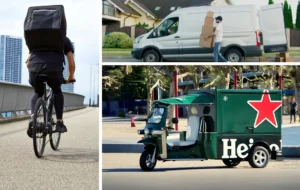
The L5 Cargo Electric Tuk Tuk VS. Other Delivery Vehicles
L5 Cargo, Vans or Motorbikes and Bicycles? Compare the L5 Cargo with other delivery vehicles and find out which is best for your business.
Read more
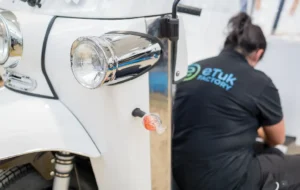
Maintenance tips for Tuk Tuks: Take Care of Your e-Tuk and Avoid Breakdowns
Find out the 4 main maintenance recommendations for your tuk tuk to avoid breakdowns and extend the life of your vehicle.
Read More



